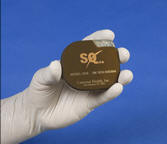April 27th, 2012
Cameron Health’s Subcutaneous ICD Sails Through FDA Advisory Panel
Larry Husten, PHD
 The FDA’s Circulatory System Devices panel voted 7-1 on Thursday that the benefits of the Cameron Health subcutaneous ICD system (S-ICD) outweigh the risks in appropriately selected patients.
The FDA’s Circulatory System Devices panel voted 7-1 on Thursday that the benefits of the Cameron Health subcutaneous ICD system (S-ICD) outweigh the risks in appropriately selected patients.
Unlike all previous ICDs, the S-ICD is much easier to implant because it is does not require threading a lead to connect the device to the heart. Panel member Rick Lange said the S-ICD was an example of “I-should-have-thought-of-that technology”, according to Heartwire reporter Reed Miller on Twitter. That sentiment was echoed by device giant Boston Scientific in March when it agreed to acquire Cameron Health for $150 million initially, and as much as $1.2 billion in additional payments based on future performance, according to Reuters.
The advisory panel also voted 7-1 that the S-ICD was effective and 8-0 that it was safe.
Earlier this week, FDA reviewers posted the previously unavailable results of the pivotal trial for the S-ICD. The FDA review set the tone for a generally supportive panel meeting, finding that the trial met its primary safety and efficacy endpoints, though it identified several potential safety issues.

I’m returning to San Antonio after participating in the FDA Circulatory System Devices Panel that evaluated this novel subcutaneous ICD [S-ICD].
It was assessed in a well executed study that was designed in close collaboration with the FDA who provided an expedited review of the device. The clinical trial to study the device was approved by the FDA in February 2010, the Premarket Approval Application (PMA) requesting marketing approval of the device was submitted to the FDA in December 2011, and it was evaluated by the advisory panel this week. This is an example of how the approval process should work.
The S-ICD system uses a subcutaneously placed electrode and the generator can for sensing and detecting ventricular arrhythmias and delivering biphasic defibrillation shocks, as well as bradycardia cardiac pacing for a period up to 30 seconds following defibrillation. When the device senses a ventricular tachyarrhythmia it charges up to 5 maximum energy shocks (80J). The shock energy is non-programmable.
Since the device does not have chronic pacing ability and limited longevity (according to the sponsor, the battery has a capacity of approximately 21 shocks over a service life of 5 years) it is intended to provide defibrillation therapy for the treatment of life-threatening ventricular tachyarrhythmias in patients who do not have symptomatic bradycardia; incessant ventricular tachycardia; or spontaneous, frequently recurring ventricular tachycardia that is reliably terminated with anti-tachycardia pacing. It would also be inappropriate for patients who might need CRT (ie biventricular pacing).
Current ICD devices have been plagued by lead problems — malfunctions and infections — and their removal is technically difficult and potentially hazardous. This new device uses a subcutaneous lead that is easier and less risky to place (no fluoroscopy or vascular access required) and should be more durable since it is sturdier and not exposed to stress. It is much easier and safer to remove than an endovascular leads if it needs to be replaced.
All the panelists expressed concern that the device’s simplicity and its subcutaneous implantation might open the door to implantation by individuals not familiar with proper patient selection, induction testing and subsequent device management. So we strongly urged the FDA and sponsor to limit its implantation to electrophysiologists, at least in the device initial roll-out.